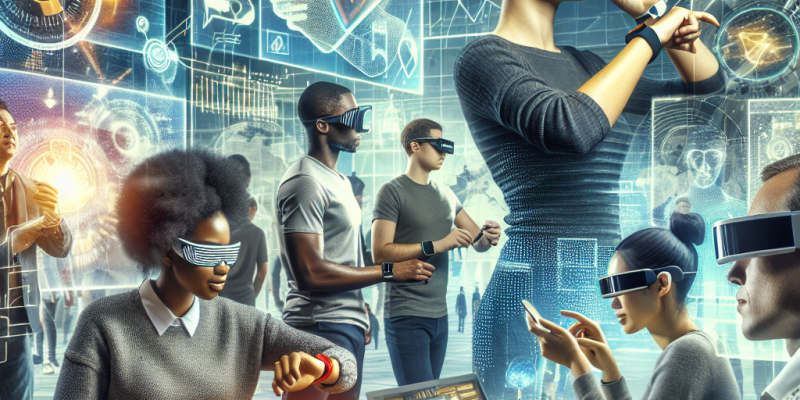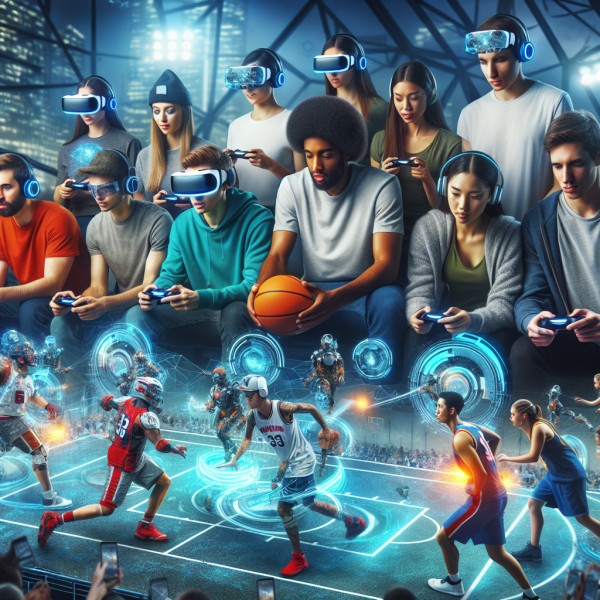Wearable Technology: The Next Frontier in IoT Development

The rapid development of technology in recent years has led to a remarkable shift in how we interact with our environment. Among these innovations, wearable technology stands out as a pivotal player in the Internet of Things (IoT) landscape. As individuals become increasingly integrated with tech, the potential applications of wearables are vast and transformative. This article explores the evolution of wearable technology, its significance in the IoT ecosystem, and its promising future.
What is Wearable Technology?
Wearable technology refers to smart electronic devices that can be comfortably worn on the body, typically as accessories or clothing. Examples include smartwatches, fitness trackers, smart glasses, health-monitoring devices, and even augmented reality (AR) headsets. These devices not only function independently but also connect to the internet and sync with other devices, establishing a network that significantly enhances user experience and data interaction.
The Evolution of Wearables
Wearable technology is not a new concept. The journey began in the 1960s with simple devices like the calculator watch, but it gained traction in the early 21st century with the advent of smartphones. The launch of the first Fitbit in 2009 marked a turning point, popularizing fitness trackers that monitor physical activity and health metrics. This was soon followed by the release of smartwatches, with Apple’s introduction of the Apple Watch in 2015 becoming a watershed moment for mainstream adoption.
Today, the landscape is diverse, with wearables understanding and interpreting user behavior in real-time. Technologies such as artificial intelligence (AI), machine learning, and sensors play an essential role in advancing wearables, making them smarter and more capable.
The Role of Wearables in IoT
As the IoT ecosystem expands, wearables are increasingly becoming integral components. The potential of IoT lies in creating interconnected systems that streamline operations, enhance efficiency, and provide valuable insights through data collection and analysis. Wearable technology fits seamlessly into this framework in several ways:
1. Data Collection and Monitoring
Wearable devices are equipped with sensors that continuously monitor biometrics, environmental conditions, and user behavior. This data can be invaluable, especially in healthcare, where wearables can track heart rate, oxygen levels, and physical activity. This continuous stream of data allows for real-time health monitoring, leading to early detection of health issues and personalized medical interventions.
2. Enhanced User Experience
Wearables can offer a highly personalized user experience. The information gleaned from these devices can be used to tailor services, monitor user preferences, and automate daily tasks. For instance, smartwatches can alert users to messages, emails, and health notifications, minimizing the need to check smartphones constantly.
3. Workplace Efficiency
Businesses are recognizing the potential of wearables to enhance productivity. From smart helmets that provide workers with AR overlays for safety to IoT-enabled uniforms that monitor physical strain, wearables are revolutionizing industries like logistics, manufacturing, and healthcare. These devices can capture valuable data on employee performance, safety, and overall well-being.
Challenges in Wearable Technology Integration
Despite its potential, the integration of wearable technology within the IoT framework does not come without challenges. Issues surrounding data privacy, security, and interoperability need to be addressed.
- Data Privacy: As wearables collect sensitive personal information, concerns regarding data protection and privacy have emerged. Companies must ensure that user data is secure and used responsibly.
- Security Risks: Because wearables are often connected to other devices, they can become entry points for cyberattacks. Robust security measures are necessary to safeguard against vulnerabilities.
- Interoperability: The variety of devices and platforms in existence poses challenges for seamless integration. Standardization across devices would facilitate smoother communication within the IoT ecosystem.
The Future of Wearable Technology in IoT
The future of wearable technology in the IoT landscape is bright and full of possibilities. Innovations are emerging rapidly, with several trends expected to shape the market in the coming years:
– Health Monitoring and Telemedicine
The ongoing emphasis on health and wellness is likely to drive advancements in medical-grade wearables. These devices will not only track fitness metrics but also enable physicians to monitor patients remotely, thereby transforming telemedicine.
– Integration with Smart Homes
Wearables will increasingly connect with smart home devices, allowing users to control their environment through simple commands. Imagine adjusting thermostat settings, controlling lights, and operating smart appliances directly from a smartwatch.
– Fashion and Functionality
As technology progresses, the fusion of style and utility will lead to a new wave of fashionable wearables. Luxury collaborations and designs will cater to a broader audience, integrating advanced technology into everyday clothing and accessories without compromising aesthetics.
– AI-Powered Features
AI will continue to enhance wearable technology by enabling advanced analytics, predictive capabilities, and personalized recommendations based on usage patterns and preferences.
Conclusion
Wearable technology stands at the forefront of IoT development, providing a conduit for users to connect with their environment in unprecedented ways. As innovation continues, the integration of wearables within the IoT ecosystem will usher in a new era of convenience, efficiency, and interaction. While challenges remain, the continuous evolution of wearable technology is sure to enrich lives and redefine how we utilize technology in our daily experiences. The next frontier in IoT is indeed an exciting one, and wearable technology is set to lead the charge.













